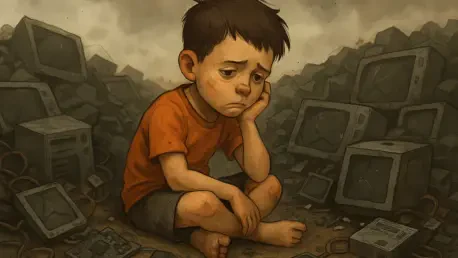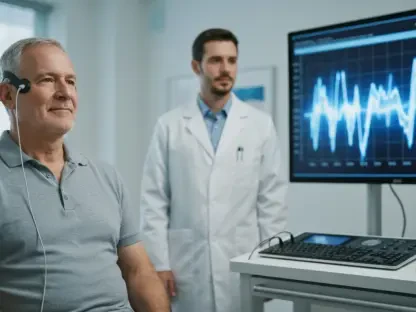What happens when the gadgets society discards become a hidden danger to the youngest generation, silently threatening their well-being in regions where electronic waste, or e-waste, is processed? In such areas, children are facing an alarming health crisis that demands urgent attention. Studies reveal a shocking statistic: 12.7% of kids in a Chinese e-waste recycling area suffer from hypertension, a condition once thought to be an adult concern. This rate is four times the national average, pointing to a dire connection between toxic exposure and childhood health risks. The mounting piles of discarded electronics are not just an environmental burden—they are a ticking time bomb for public health.
Why E-Waste Is a Growing Concern
The rapid pace of technological advancement means devices like smartphones and laptops become obsolete within a few years, leading to millions of tons of e-waste generated annually. Much of this waste ends up in informal recycling hubs, often in low-resource communities across the globe. These areas, lacking proper safety measures, become hotspots for dangerous pollutants that seep into the air, water, and soil, creating a toxic environment for residents, especially children who are most vulnerable to long-term harm.
This issue transcends mere waste management—it’s a matter of equity and health. Children in these regions are disproportionately affected, as their developing bodies cannot fend off the damage caused by environmental toxins. Hypertension in kids, linked to such exposures, signals a future of chronic health challenges, placing immense pressure on already strained healthcare systems. The urgency to address e-waste pollution has never been clearer as its consequences ripple through generations.
Unpacking the Toxic Impact on Young Hearts
E-waste recycling releases a cocktail of harmful substances, including heavy metals like lead, cadmium, and arsenic, alongside volatile organic compounds (VOCs) such as benzene derivatives. Research conducted in a Chinese recycling hub shows that children are exposed to these toxins daily, with devastating effects on their cardiovascular health. The data is stark: certain metals, including cobalt and gallium, correlate directly with elevated systolic blood pressure, while VOC mixtures contribute to broader heart strain.
Beyond surface-level exposure, these pollutants disrupt critical biological processes. They trigger oxidative stress, damage blood vessels, and throw metabolic pathways into chaos, as evidenced by shifts in amino acid and fatty acid metabolism. Such disruptions, identified through advanced urinary metabolomics, hint at deeper systemic issues, including potential imbalances in gut microbiota, which may worsen hypertension risks over time.
Children’s unique vulnerabilities amplify these dangers. Unlike adults, their bodies are still forming, making early exposure to toxins a setup for lifelong cardiovascular problems. This isn’t merely a temporary health glitch—it’s a foundation for chronic conditions that could burden them for decades, highlighting the critical need for protective measures in affected areas.
Ground-Level Insights from Affected Communities
In the heart of e-waste recycling zones, the human toll of this crisis comes into sharp focus. A comprehensive study involving 426 children in China uncovered that even reduced pollutant levels compared to past decades still pose severe risks. The researchers noted, “Mixed exposures continue to threaten cardiovascular health in young populations,” emphasizing the persistent danger despite some progress in pollution control. Machine learning models from the study predicted hypertension risk with 83% accuracy, showcasing how technology can help identify at-risk children.
Stories from these communities add a poignant layer to the data. Parents often observe their children grappling with unexplained fatigue and other subtle symptoms, unaware that nearby recycling activities might be the culprit. These personal accounts underscore a harsh reality: families are caught in a cycle of economic necessity and health hazards, often lacking the resources or knowledge to break free from toxic surroundings.
Strategies to Shield the Next Generation
Addressing this invisible threat requires a multi-faceted approach tailored to the complexities of e-waste pollution. Strengthening regulations stands as a critical first step—governments must enforce stringent standards for safe disposal and processing to curb toxic releases. Policies that target informal recycling practices can significantly reduce environmental contamination, protecting communities from unseen dangers.
Community education also plays a vital role. Families in high-risk areas need accessible information about the hazards of e-waste exposure and practical ways to minimize contact, such as avoiding contaminated water sources or using protective gear during recycling work. Meanwhile, supporting formal recycling initiatives, including take-back programs by tech companies, ensures that discarded devices are handled responsibly, keeping toxins out of vulnerable environments.
On a broader scale, sustained research and monitoring are essential. Health officials should prioritize long-term studies to track the outcomes of exposed children and invest in local screening for early detection of hypertension. Individual actions matter too—reducing e-waste by repairing or repurposing devices and choosing certified recycling options can collectively lessen the burden on at-risk regions.
Reflecting on a Path Forward
Looking back, the journey to uncover the link between e-waste pollution and childhood hypertension revealed a crisis that had long been overlooked. The evidence was undeniable, painting a grim picture of young lives altered by toxic exposure in recycling hubs. Communities had struggled silently, bearing the weight of a problem fueled by global consumption patterns.
Yet, from this challenge emerged a clear roadmap for change. Future efforts must focus on innovative solutions, such as developing safer recycling technologies and fostering international cooperation to manage e-waste responsibly. Advocacy for stricter corporate accountability could shift the burden away from vulnerable populations, ensuring that the cost of progress no longer falls on the health of children. As society moves toward a more sustainable future, prioritizing these actionable steps offers hope for healthier generations ahead.









